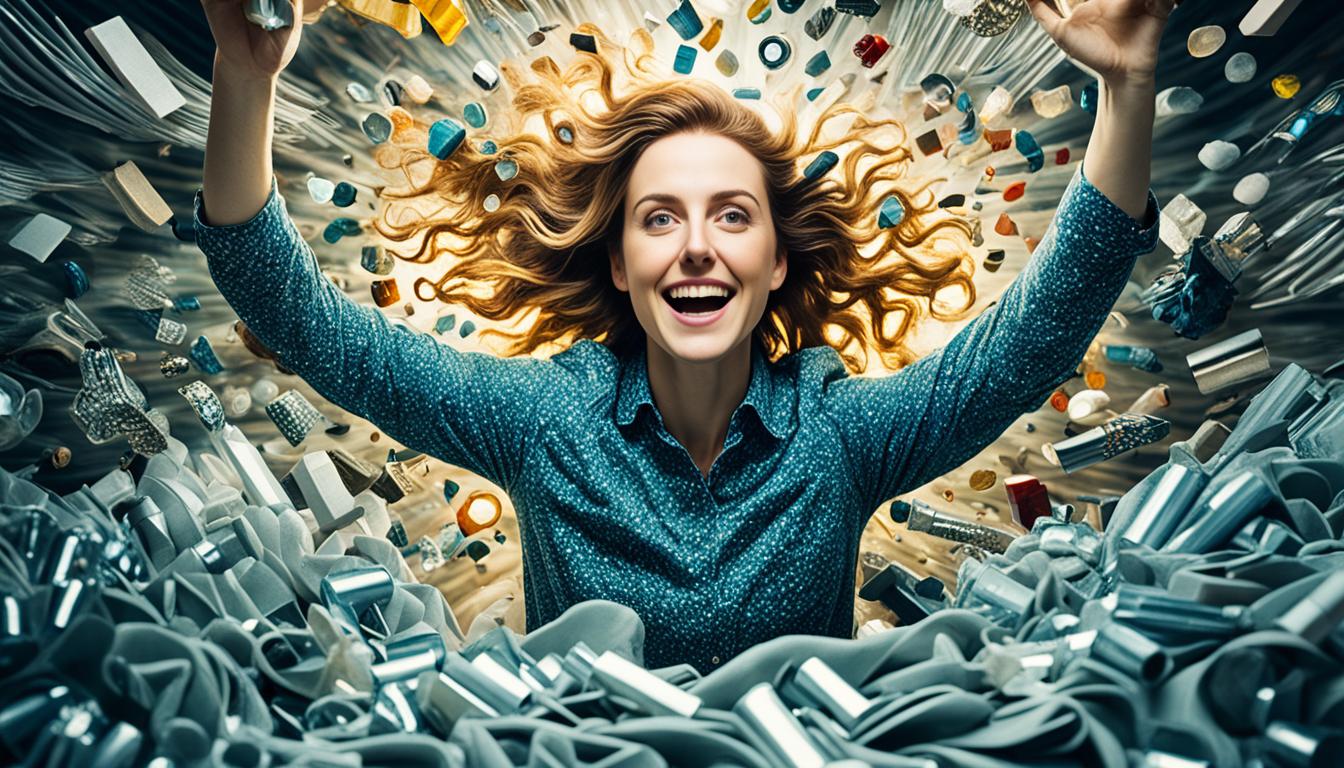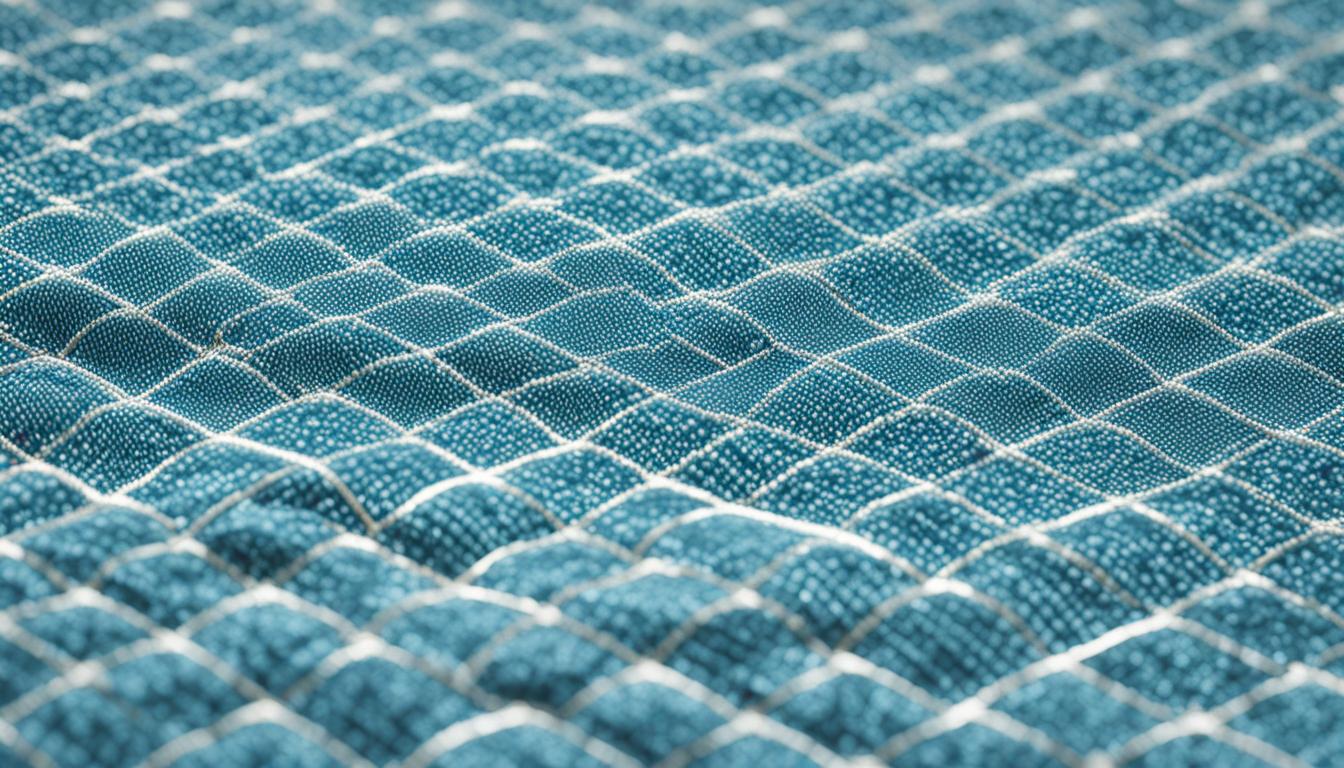Disclosure: This Post Contains Affiliate Links; We earn a commission on purchases.
EMF shielding is an innovative technology that plays a vital role in protecting electronic devices from external interference and emissions. By effectively reducing or redirecting electromagnetic fields (EMF), shielding ensures the proper functioning and longevity of sensitive equipment. But how exactly does it work?
When it comes to EMF shielding, electromagnetic radiation encounters conductive or magnetic materials that can reflect or absorb the radiation, minimizing its impact. The effectiveness of shielding depends on factors such as the material used, its thickness, the size of the shielded volume, and the frequency of the electromagnetic fields.
Popular materials for EMF shielding include copper, brass, nickel, silver, and steel. These materials provide the necessary conductivity to reflect or absorb electromagnetic radiation. Additionally, technologies like nanocomposites and conductive coatings are being developed to enhance the efficiency of EMF shielding.
Key Takeaways:
- EMF shielding is crucial for protecting electronic devices from external interference and emissions.
- Shielding works by reflecting or absorbing electromagnetic radiation, minimizing its impact.
- The effectiveness of shielding depends on factors like the material used, thickness, and frequency of the electromagnetic fields.
- Materials commonly used for EMF shielding include copper, brass, nickel, silver, and steel.
- Ongoing research aims to improve the efficiency of EMF shielding with technologies like nanocomposites and conductive coatings.
Types of EMF Shielding Materials
Different materials can be used for EMF shielding. Thin layers of metal, such as copper, brass, nickel, and silver, are commonly used. Sheet metal, metal screens, and metal foams can also provide effective shielding. These materials can reflect or absorb electromagnetic radiation based on their physical properties, including conductivity, thickness, and weight. Conductive coatings, such as metallic inks or paints, can be applied to the inside of enclosures to create a continuous conductive layer. It is important to ensure that there is continuous conductive contact between shield components and use techniques like knitted metal wire sleeves to maintain the effectiveness of the shielding.
| EMF Shielding Material | Properties |
|---|---|
| Thin Layer of Metal (Copper, Brass, Nickel, Silver) | Reflects or absorbs electromagnetic radiation Conductive Various thickness options Moderate weight |
| Sheet Metal | Reflects or absorbs electromagnetic radiation Conductive Thick Heavy |
| Metal Screens | Reflects or absorbs electromagnetic radiation Conductive Varying mesh sizes Light to moderate weight |
| Metal Foams | Reflects or absorbs electromagnetic radiation Conductive Porous structure Light to moderate weight |
| Conductive Coatings | Creates a continuous conductive layer Applied as metallic inks or paints Lightweight |
Applications of EMF Shielding
EMF shielding offers various applications in different industries. Let’s explore some key areas where EMF shielding plays a crucial role.
Shielded Cables
Shielded cables are extensively used to protect signal transmissions from electromagnetic interference. These cables contain an electromagnetic shielding, typically in the form of wire mesh or foil, surrounding the inner conductor. This shielding prevents external EMF from interfering with the transmitted signals, ensuring reliable and high-quality data transmission.
Faraday Cages
Faraday cages are conductive enclosures that effectively block electrostatic and electromagnetic fields. They are widely used in electronic devices to provide protection against external interference. Faraday cages work by redistributing any surface charges or electric fields to the exterior of the cage, thereby creating a neutral internal environment that prevents electromagnetic waves from entering or exiting the enclosure.
RFID Protection
EMF shielding is crucial for protecting data stored on RFID (Radio Frequency Identification) chips embedded in various devices. RFID technology relies on radio waves for communication, and EMF shielding prevents unauthorized access or data loss by blocking external electromagnetic interference that could compromise the integrity or security of the stored information.
EMI Shielding in Computers and Keyboards
EMF shielding is essential in computers and keyboards to prevent passive monitoring of keyboard emissions. By shielding the electronic components and key circuits, EMF shielding ensures that the signals generated by keystrokes cannot be intercepted or decoded by external devices, preserving data privacy and security.
Medical and Laboratory Equipment Protection
EMF shielding is of utmost importance in the healthcare and laboratory sectors to protect sensitive medical equipment and experiments from interfering signals. Shielding these devices and equipment ensures accurate and reliable readings, reducing the risk of data corruption or erroneous results caused by electromagnetic interference.
Defense Applications
In defense applications, EMF shielding is critical to minimize the risks of electromagnetic interference. Cables used in military equipment are often encased inside grounded conductive barriers to prevent external EMF from impacting the functionality and performance of sensitive electronic systems. This shielding ensures reliable communication, navigation, and control systems in challenging electromagnetic environments.
| EMF Shielding Applications | Examples |
|---|---|
| Shielded Cables | Ethernet cables, HDMI cables |
| Faraday Cages | Microwave ovens, electronic testing chambers |
| RFID Protection | Contactless payment cards, passport cards |
| EMI Shielding in Computers and Keyboards | Laptops, desktop computers, gaming keyboards |
| Medical and Laboratory Equipment Protection | MRI machines, laboratory analyzers |
| Defense Applications | Military communication systems, radar equipment |
How Does EMF Shielding Work?
EMF shielding works through a combination of reflection and absorption of electromagnetic radiation. When electromagnetic waves encounter a conductive enclosure, such as copper, silver, or brass, they can be reflected back, minimizing their impact. On the other hand, less conductive materials like steel can absorb magnetically dominant waves, further reducing their influence. This mechanism allows for effective reduction of electromagnetic fields in a given space.
A notable example of EMF shielding is the Faraday cage, which is a type of conductive enclosure used to block electrostatic fields. The cage acts as a barrier, preventing electromagnetic radiation from entering or leaving the enclosed space. It is commonly used in sensitive electronic devices and laboratories where protection against electromagnetic interference is critical.
The effectiveness of EMF shielding depends on several factors, including the conductivity, permeability, and thickness of the materials used. Higher conductivity and permeability enhance the shielding ability of the materials, while thicker shielding provides greater protection. To maintain the effectiveness of shielding, it is essential to eliminate or minimize any holes or gaps in the shield. Any holes should be significantly smaller than the wavelength of the radiation to prevent leakage and ensure optimal shielding effectiveness. Larger holes allow the electromagnetic radiation to pass through, reducing the overall attenuation provided by the shield.

Conclusion
The importance of EMF shielding cannot be overstated. It plays a critical role in reducing electromagnetic interference and safeguarding electronic devices from external interference and emissions. By utilizing conductive or magnetic materials, such as thin metal layers, sheet metal, metal screens, and metal foams, effective shielding can be achieved. The use of conductive coatings and knitted metal wire sleeves ensures continuous conductive contact between shield components, maximizing the shielding effectiveness.
EMF shielding finds application in various fields, from shielded cables and Faraday cages to the protection of medical and laboratory equipment. Shielded cables prevent interference in signal transmission, while Faraday cages act as conductive enclosures that block electrostatic and electromagnetic fields. The shielding of RFID chips in devices is crucial for securing sensitive data. Additionally, EMF shielding is widely used in computers, keyboards, and defense applications to mitigate the risks of electromagnetic interference.
In summary, understanding how EMF shielding works is essential for maintaining the proper functioning and protection of electronic devices in diverse environments. By harnessing the power of EMF shielding, we can ensure reliable performance, minimize interference, and safeguard sensitive information. The importance of EMF shielding cannot be underestimated, making it an integral aspect of modern technology.
Source Links
- https://cpcases.com/news/what-is-electromagnetic-shielding
- https://en.wikipedia.org/wiki/Electromagnetic_shielding
- https://www.ncbi.nlm.nih.gov/pmc/articles/PMC8838001/

Subscribe to Our Newsletter










